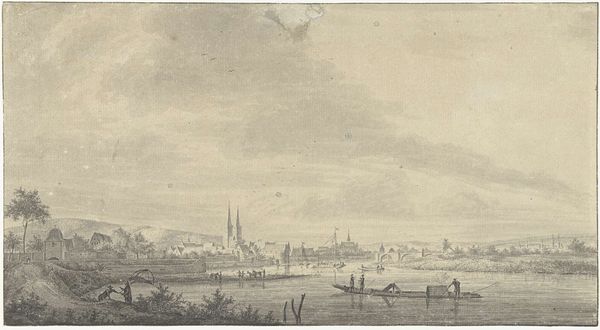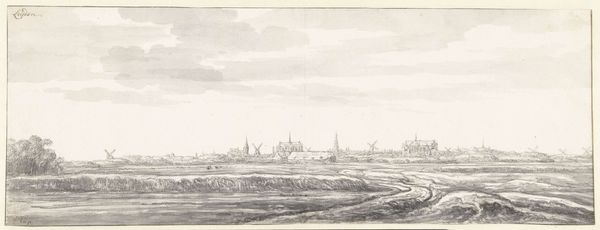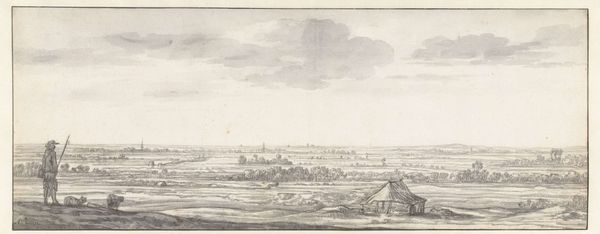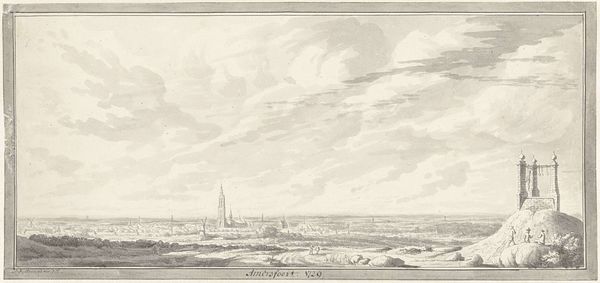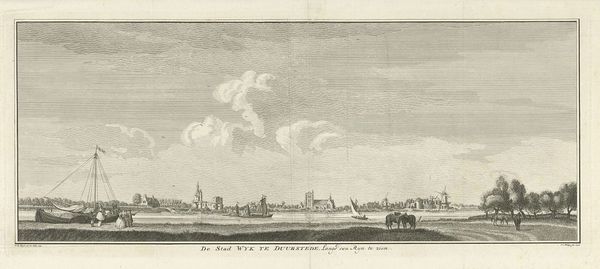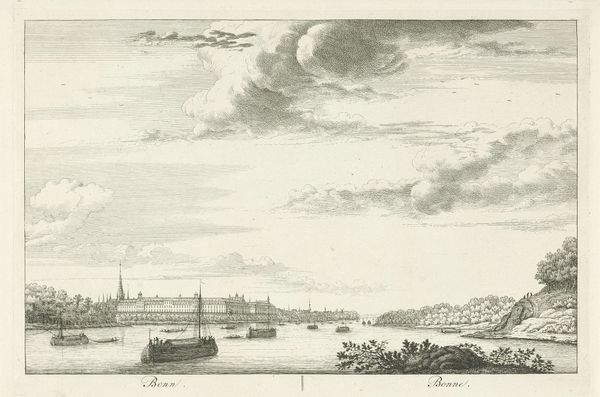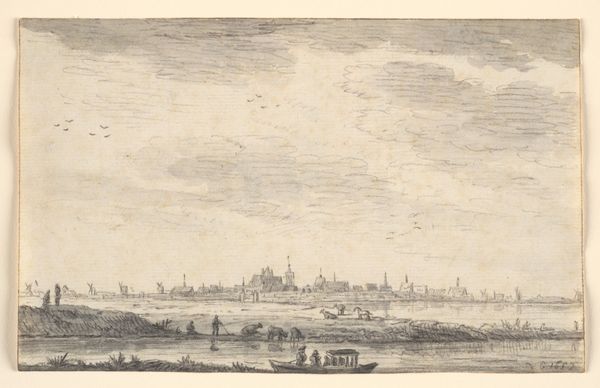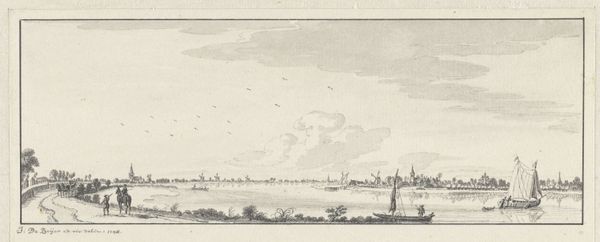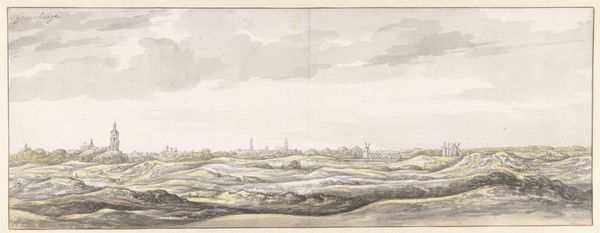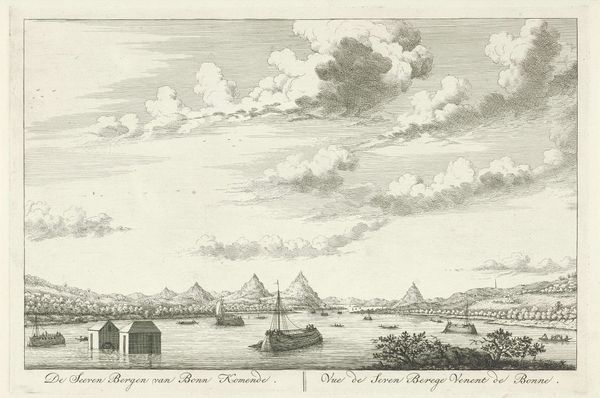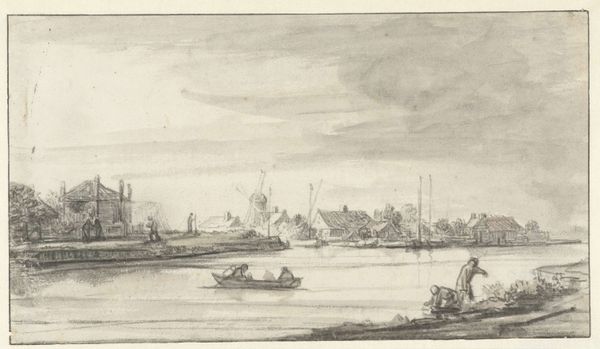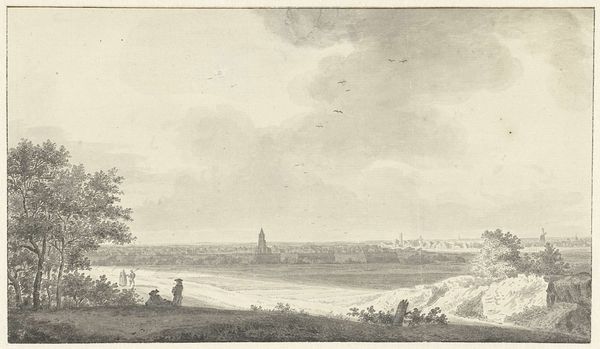
drawing, watercolor
#
drawing
#
dutch-golden-age
#
landscape
#
watercolor
#
cityscape
#
watercolour illustration
#
watercolor
Dimensions: height 185 mm, width 433 mm
Copyright: Rijks Museum: Open Domain
Editor: Aelbert Cuyp's "Gezicht op Harderwijk," a watercolor drawing from the Dutch Golden Age, has a serene quality to it. It feels like a peaceful day in the countryside. What do you see in this piece that stands out? Curator: The immediate read is its apparent calmness. But I look closer. I ask myself: how is cultural memory imprinted onto this seemingly bucolic view? Consider the vantage point— elevated, almost distanced. The city, Harderwijk, is neatly arranged along the horizon, a thin strip. Notice the symbols—the church tower, the windmills. Editor: The symbols of stability, then? The church, the industry… Curator: Precisely. But the drawing is rendered in muted tones, almost monochromatic, isn't it? The softness diminishes the harshness or definiteness of clear symbolic imagery. These aren't emphatic declarations, but rather quietly powerful visual cues. What do those tones, that haze, convey to you? Editor: A kind of nostalgic lens, maybe? Almost like looking back at a fading memory of Dutch prosperity… Curator: It’s not merely nostalgia but an acknowledgement of temporality and a tension with change. Cuyp presents symbols of permanence as fragile and impermanent, doesn’t he? This creates a potent space for cultural meditation. Editor: So the symbols, rendered gently, tell a more complex story. Thanks, I didn't look at it that way at first. Curator: Visual cues allow artists to convey the unutterable feelings experienced in times of turbulence or deep societal shifts. And hopefully that is reflected upon through its symbols.
Comments
No comments
Be the first to comment and join the conversation on the ultimate creative platform.
